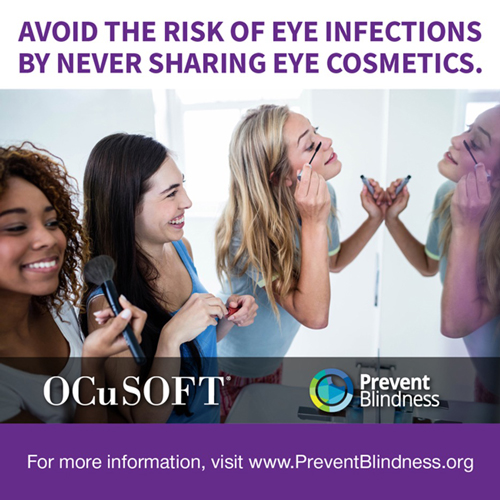 |
First, ditch all the old stuff. Eye makeup should be discarded after three to six months because bacteria grow easily in creamy or liquid eye makeup. And here’s something you may not have thought of – Tamara Petrosyan, O.D., State University of New York College of Optometry associate clinical professor notes, “do not pump the mascara brush in and out of the container as this introduces air and potentially bacteria into the bottle." And considering that flakes of metallic and glitter makeup can get into the eye and tear film, causing irritation, infection, or abrasions, wouldn’t a more natural look with a jazzy pair of specs do just as well?
Eyeliner has been shown to be a big culprit as a risk to eye health, especially when applied to the inner eyelash line. A 2018 article in Clinical Optometry examined the effects of cosmetic product contamination on tear film function. Researchers found that migration of cosmetics across the eyelid margin could result in tear film instability and dry eye symptoms. The article cites a study of 180 participants that reported a significant correlation between eye cosmetic wear and reduced tear film lipid layer thickness. The “migration of cosmetic products across the eyelid margin may potentially contribute toward an increase in debris within the surface tear film lipid layer, in meibomian gland blockage, and in meibum contamination. The resulting destabilization of the lipid layer can lead to increased tear evaporation and reduced tear film stability.”
In addition to cosmetics, products like heated eyelash curlers, magnetic and glued faux eyelashes, eyelash perms, and semi-permanent tattoo makeup come with risks to eye health. It’s important to remind patients that cosmetic products and treatments don’t require FDA testing and approval. And looking for products labeled ‘natural’ or ‘organic’ may not be the answer. According to Janet Nudelman, director of the Campaign for Safe Cosmetics, “There’s no legal definition of the word ‘natural.’” Additionally, “organic” may only refer to the ingredients that are certified organic, not the entire product itself. She recommends reading the ingredients in eye cosmetics and avoiding products that contain ethanolamines, identified by the letters DEA, TEA and MEA. Ethanolamines can be contaminated by cancer-causing chemicals.
You can get on board with Women’s Eye Health and Safety Month with PSAs on social media about taking a close look at eye cosmetics. You’ll find more information and infographics at preventblindness.org. Encourage patients to “natural eyes” by featuring stunning eyewear styles. And you can learn more about eye health with our CE, Nutrition and Vision, at 2020mag.com/ce.












